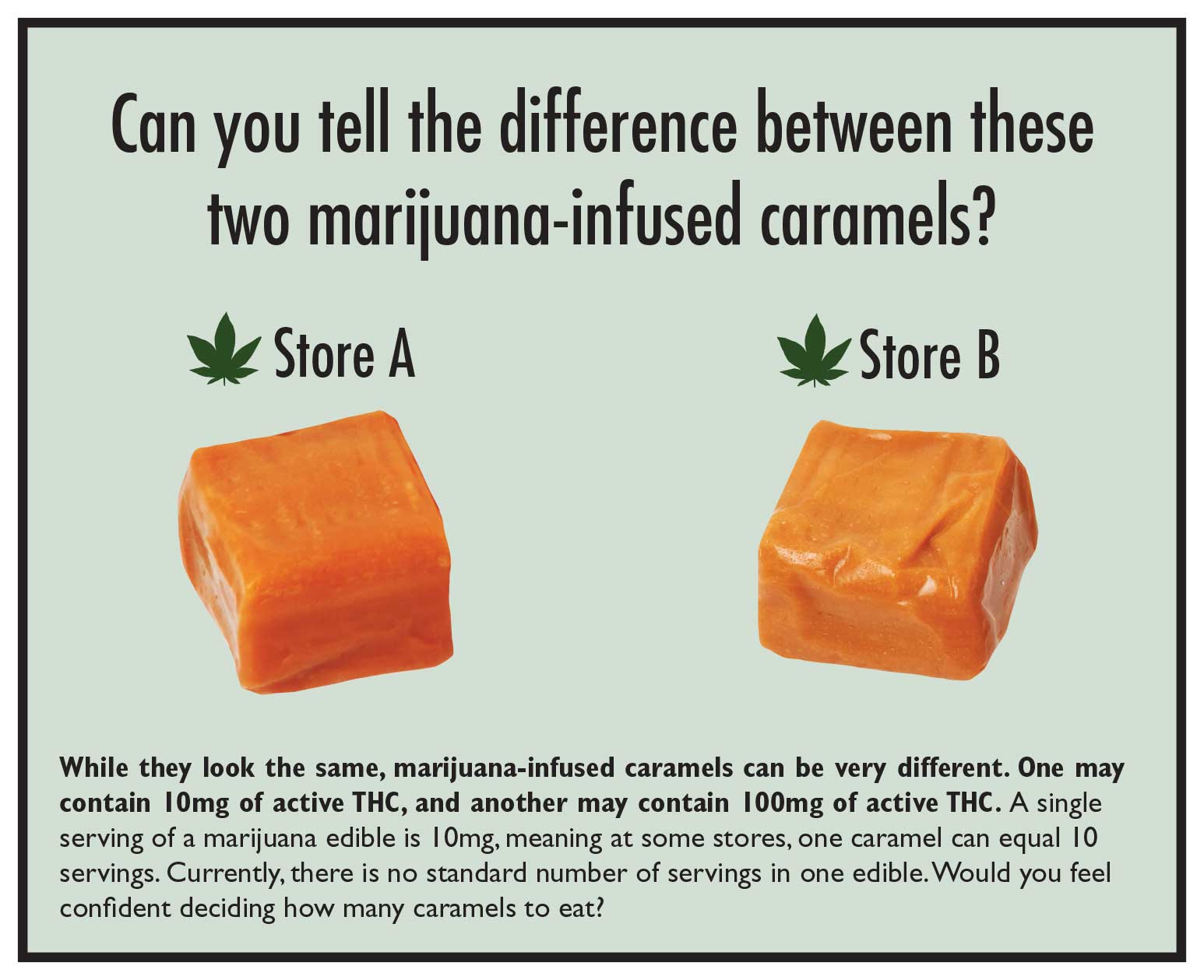
Major safety concerns around marijuana edibles have urged a task force of stakeholders to create a safer industry.
“We take our responsibility of comprehensively regulating this industry very seriously,” co-chair Lewis Koski says, recalling the recent deaths involving marijuana edibles. Koski is the director of the Colorado Marijuana Enforcement Division.
“There isn’t a book of best practices on how to regulate marijuana or marijuana edibles. Since becoming an agency we’ve solicited feedback from stakeholders with varying expertise and opinions.”
The task force—comprised of officials from public safety and health, dispensaries, and the Department of Revenue—has met several times to discuss concerns around edible serving sizes.
Currently, one serving of an edible has 10mg of active THC, a level decided through clinical trials. But, the number of servings in one edible varies so that oftentimes consumers don’t know how much they’re ingesting. The complete edible can have up to 100mg of THC.
At some dispensaries, one infused caramel the size of a mini Reese’s Peanut Butter Cup is a single serving (10mg). At other dispensaries, one infused caramel is 10 servings (100 mg). How does the average consumer know to cut a small caramel into 10 pieces?
“Many people are unaware of the potential adverse effects or how to appropriately use these products,” Dr. Sam Wang of Children’s Hospital says. He is part of the task force and successfully passed a childproof packaging requirement after seeing an increase in accidental pot ingestion among kids.
Unlike smoking marijuana, Wang says edibles have a delayed effect (sometimes up to 2 hours), but the high lasts much longer and effects can linger long after the peak.
Some of the adverse effects include sleepiness, slowed reaction time, increase in heart rate and blood pressure, nausea, anxiety and paranoia.
“People have different tolerances and depending on how habitually they use marijuana it can affect them a lot less or a lot more,” Wang says. Body fat, weight, potency, and level of experience affect a person’s high.
The task force coined the term “stacking” for when a consumer doesn’t feel the effect of an edible right away so he or she consumes another one. If the high still doesn’t hit, the consumer may eat another edible. At this point the consumer has “stacked” multiple doses that accumulate and hit all at once.
The task force is particularly concerned about a consumer who is unaware of how much THC is in a serving and ingests multiple servings.
The group generally agrees upon 10mg as an appropriate THC level, but how to make serving sizes more intuitive for consumers is a complicated question.
One person in the task force suggested using a color-rated system like the ski slopes with green for the new user, blue for the more experienced and black diamond for the habitual.
Some people suggested a serving of THC should always correlate to the food serving, but one person’s idea of a serving size may be larger than another person’s. Is a person more likely to eat one Swedish Fish or 10 Swedish Fish?
Another person in the group said a single product should always be a single serving of THC. That way a consumer can open a package and eat the entire product knowing it is always 10mg.
But, dispensaries fear packaging costs for single servings. Currently, a dispensary can wrap a 100mg candy bar, but with a single-serving requirement a dispensary would have to break up the candy and package each piece.
Some dispensaries also fear their more experienced consumers who enjoy a higher dose of THC in one serving may go to the black market.
While some answers remain unclear, other safety regulations have already begun.
On May 21, Governor John Hickenlooper signed a bill into law that requires edibles to be “clearly identifiable” as marijuana products, in contrast to non-infused candies, baked goods, or other products, which often look exactly like edibles.
Since May 1, retail marijuana stores have been required to submit a sample batch of products on their shelves to be tested for potency. The test determines THC level and will also test for homogeneity, whether the THC is evenly spread throughout the edible.
Beginning June 1, manufacturers will also have to submit flower, or smoke-able marijuana, for potency testing. October will begin contaminant testing.
The task force is also considering a required training program for “budtenders,” or pot sellers. Currently, retail stores, owners and employees are required to have a license to sell, but there is no required training program. At some stores consumers receive detailed information and at others no information at all.
While the task force is not working on any deadline, they continue to meet and discuss safety concerns.
“Public safety is the driving force behind a lot of the work with the stakeholder group,” Koski says. “For us to be effective we have to always be flexible and adaptable and recognize that as more information comes in we need to continue our analysis and develop a program to lead the nation as an example of what good marijuana regulation can be.”



0 Comments